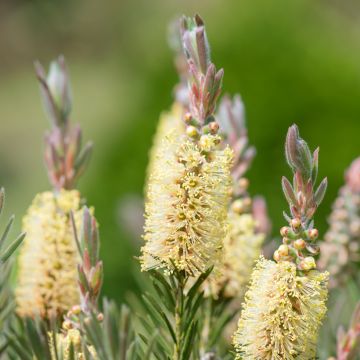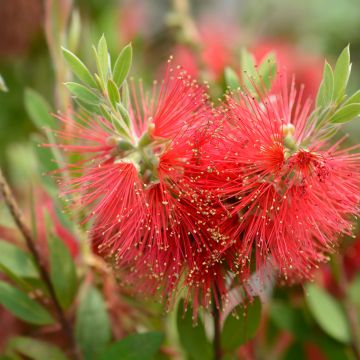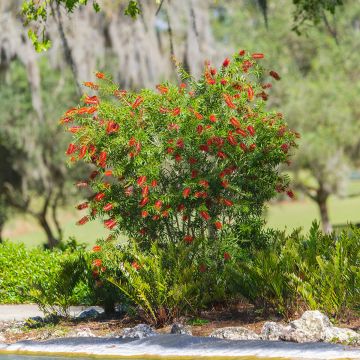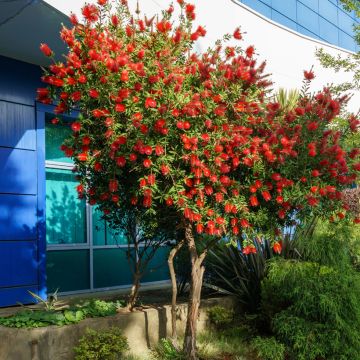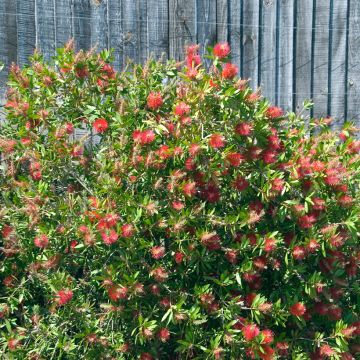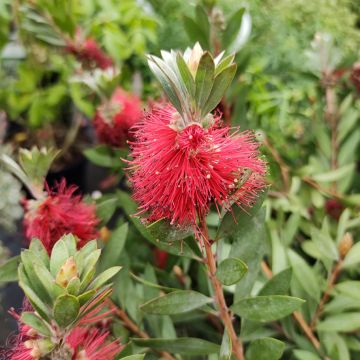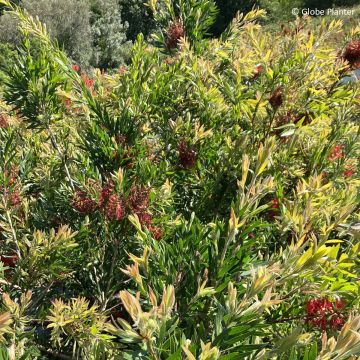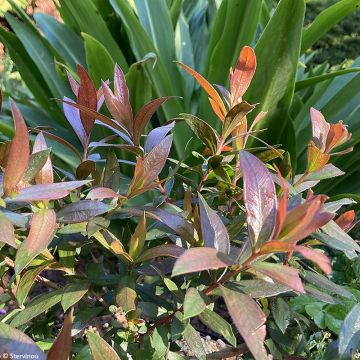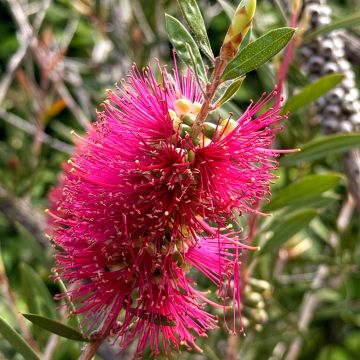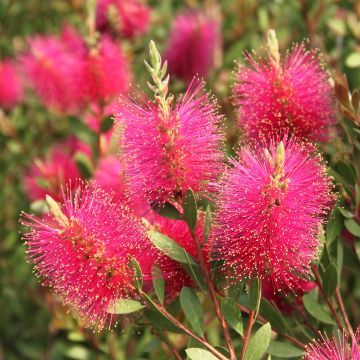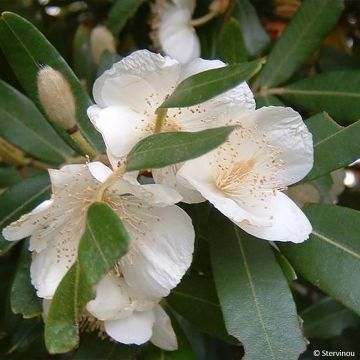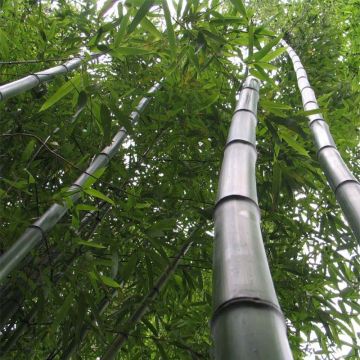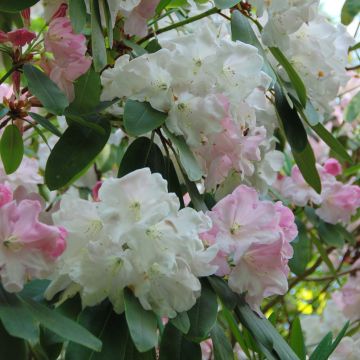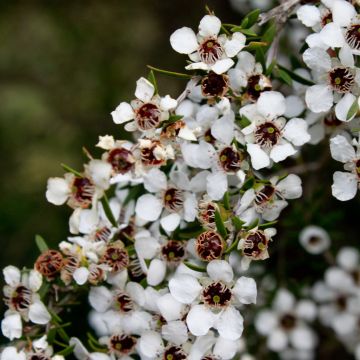

Callistemon viminalis Inferno - Bottlebrush


Callistemon viminalis Inferno - Bottlebrush
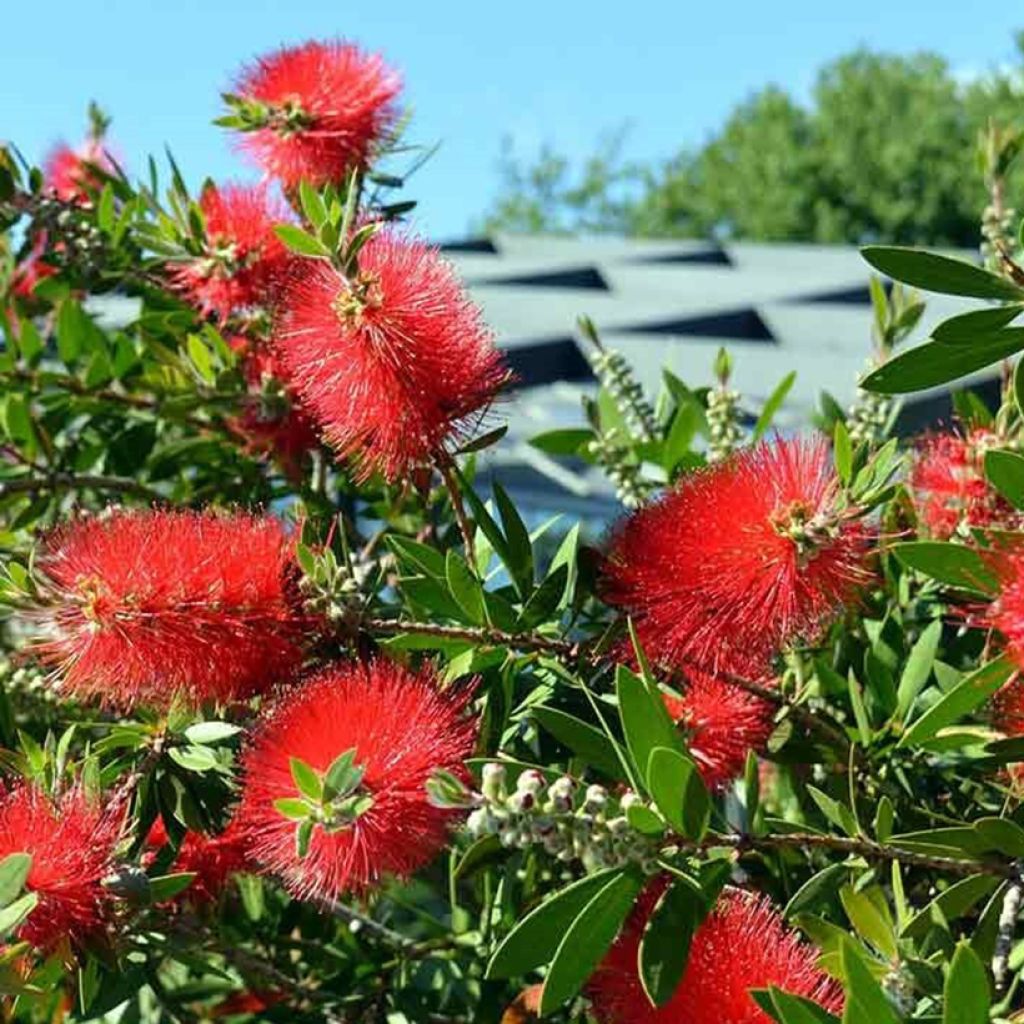

Callistemon viminalis Inferno - Bottlebrush
Callistemon viminalis Inferno - Bottlebrush
Callistemon x viminalis Inferno ® 'Yanferno'
Weeping bottlebrush
This vine-plant has been left out of my order and I had to call for a refund since this vine-plant was no longer available on the day the package was received, and "Promesses de fleurs" refused to replace it with a larger pruning: PATHETIC
Hervé, 16/10/2023
Special offer!
Receive a €20 voucher for any order over €90 (excluding delivery costs, credit notes, and plastic-free options)!
1- Add your favorite plants to your cart.
2- Once you have reached €90, confirm your order (you can even choose the delivery date!).
3- As soon as your order is shipped, you will receive an email containing your voucher code, valid for 3 months (90 days).
Your voucher is unique and can only be used once, for any order with a minimum value of €20, excluding delivery costs.
Can be combined with other current offers, non-divisible and non-refundable.
Home or relay delivery (depending on size and destination)
Schedule delivery date,
and select date in basket
This plant carries a 24 months recovery warranty
More information
We guarantee the quality of our plants for a full growing cycle, and will replace at our expense any plant that fails to recover under normal climatic and planting conditions.

Would this plant suit my garden?
Set up your Plantfit profile →
Description
Callistemon viminalis Inferno is a variety of Bottlebrush tree that is interesting for its abundant flowering of intense red, more or less perpetual, its beautifully coloured young leaves and its moderate development, well adapted to container cultivation and small gardens. This bush, with undeniable ornamental qualities, is also quite adaptable in cultivation. It is a prized plant for landscaping in mild climates and coastal areas. It can be planted in borders or as a solitary specimen in a small garden. It is also a good conservatory plant in colder climates.
Callistemon Inferno is a recent horticultural creation. It is derived, among other things, from the species Callistemon viminalis, also known as Weeping Bottlebrush, a large bush from the family Myrtaceae native to southeastern Australia, specifically the states of New South Wales and Queensland. In nature, this small tree with a weeping habit is frequently found along seasonal watercourses.
Callistemon Inferno ('Yanferno') is a beautiful evergreen bush with brittle wood, forming a crown that is both dense and rather upright. When not pruned, it reaches a height of about 2 metres (6 feet 7 inches) with a spread of 1.50 metres (4 feet 11 inches). Its growth rate is moderate. Its foliage, narrowly elliptical, is divided into leaflets ranging from 2 to 8cm (0.8 to 3.1in) long, with a beautiful bright green colour. In spring, and sometimes again in autumn, orange-tinted young shoots emerge at the tips of the branches, which are very decorative. The main flowering occurs in May-June. The flowers are composed of very long red stamens, gathered in cylindrical spikes at the ends of the flexible young branches. These upright inflorescences are about 5cm (2in) wide and 7 to 10cm (2.8 to 3.9in) long. The terminal bud repeatedly develops new leaves, then new buds, while the old inflorescence produces small cup-shaped fruits. The flowering can occur multiple times during the season in cool soil and warm climate, especially in late summer. Its grey-brown bark is fissured and decorative. It is also a honey and nectar-bearing plant that attracts many pollinating insects to the garden.
Hardy to about -7°C, Callistemon Inferno tolerates drought fairly well once established, but appreciates water in dry climates. In a greenhouse or conservatory, it forms an extremely decorative duo with a citrus tree or a Mimosa. In mild climates, especially on the Mediterranean coast or the sunny Atlantic coast of our country, it can be used as a solitary plant - it deserves it - as an informal hedge or at the back of a border. It can also be associated with evergreen Ceanothus ('Italian Skies', 'Concha', 'Puget Blue', 'Skylark'...), a spring-flowering broom, or Oleanders. Its good tolerance to salt allows for coastal exposure, facing wind and sea spray.
Report an error about the product description
Callistemon viminalis Inferno - Bottlebrush in pictures


Plant habit
Flowering
Foliage
Botanical data
Callistemon
x viminalis
Inferno ® 'Yanferno'
Myrtaceae
Weeping bottlebrush
Cultivar or hybrid
Other Callistemon
View all →Planting and care
Callistemon viminalis Inferno will thrive in a light, well-drained, fertile, moist to dry soil in summer, even though it greatly appreciates the waterings that support its beautiful flowering. Loose soil, whether humus-rich, slightly rocky or sandy, slightly acidic, neutral or even slightly calcareous, will do the job. It tolerates sea spray well. Plant it in September-October in a warm climate, preferably in March-April in cooler and more humid regions in summer. It will flourish in the sun. This variety is hardy up to -7°C (19.4 °F) at its coldest, once well established. Surround it with winter protection in colder regions, isolate it from the cold as much as possible. Place it in the warmest corner of the garden, in full sun, against a south-facing wall. However, it will be essential, in our regions further away from the sea, to cultivate it in a large pot to store it during winter, in a bright but unheated room.
Pot cultivation:
Provide good drainage at the bottom of the pot, which should be of a large volume. Use a light substrate, enriched with leaf compost and apply a little slow-release fertilizer in late winter and autumn. Water generously in summer, allowing the soil to dry out a little between waterings. The more you water, the more your Callistemon will flower.
Planting period
Intended location
Care
-
, onOrder confirmed
Reply from on Promesse de fleurs
Similar products
Haven't found what you were looking for?
Hardiness is the lowest winter temperature a plant can endure without suffering serious damage or even dying. However, hardiness is affected by location (a sheltered area, such as a patio), protection (winter cover) and soil type (hardiness is improved by well-drained soil).

Photo Sharing Terms & Conditions
In order to encourage gardeners to interact and share their experiences, Promesse de fleurs offers various media enabling content to be uploaded onto its Site - in particular via the ‘Photo sharing’ module.
The User agrees to refrain from:
- Posting any content that is illegal, prejudicial, insulting, racist, inciteful to hatred, revisionist, contrary to public decency, that infringes on privacy or on the privacy rights of third parties, in particular the publicity rights of persons and goods, intellectual property rights, or the right to privacy.
- Submitting content on behalf of a third party;
- Impersonate the identity of a third party and/or publish any personal information about a third party;
In general, the User undertakes to refrain from any unethical behaviour.
All Content (in particular text, comments, files, images, photos, videos, creative works, etc.), which may be subject to property or intellectual property rights, image or other private rights, shall remain the property of the User, subject to the limited rights granted by the terms of the licence granted by Promesse de fleurs as stated below. Users are at liberty to publish or not to publish such Content on the Site, notably via the ‘Photo Sharing’ facility, and accept that this Content shall be made public and freely accessible, notably on the Internet.
Users further acknowledge, undertake to have ,and guarantee that they hold all necessary rights and permissions to publish such material on the Site, in particular with regard to the legislation in force pertaining to any privacy, property, intellectual property, image, or contractual rights, or rights of any other nature. By publishing such Content on the Site, Users acknowledge accepting full liability as publishers of the Content within the meaning of the law, and grant Promesse de fleurs, free of charge, an inclusive, worldwide licence for the said Content for the entire duration of its publication, including all reproduction, representation, up/downloading, displaying, performing, transmission, and storage rights.
Users also grant permission for their name to be linked to the Content and accept that this link may not always be made available.
By engaging in posting material, Users consent to their Content becoming automatically accessible on the Internet, in particular on other sites and/or blogs and/or web pages of the Promesse de fleurs site, including in particular social pages and the Promesse de fleurs catalogue.
Users may secure the removal of entrusted content free of charge by issuing a simple request via our contact form.
The flowering period indicated on our website applies to countries and regions located in USDA zone 8 (France, the United Kingdom, Ireland, the Netherlands, etc.)
It will vary according to where you live:
- In zones 9 to 10 (Italy, Spain, Greece, etc.), flowering will occur about 2 to 4 weeks earlier.
- In zones 6 to 7 (Germany, Poland, Slovenia, and lower mountainous regions), flowering will be delayed by 2 to 3 weeks.
- In zone 5 (Central Europe, Scandinavia), blooming will be delayed by 3 to 5 weeks.
In temperate climates, pruning of spring-flowering shrubs (forsythia, spireas, etc.) should be done just after flowering.
Pruning of summer-flowering shrubs (Indian Lilac, Perovskia, etc.) can be done in winter or spring.
In cold regions as well as with frost-sensitive plants, avoid pruning too early when severe frosts may still occur.
The planting period indicated on our website applies to countries and regions located in USDA zone 8 (France, United Kingdom, Ireland, Netherlands).
It will vary according to where you live:
- In Mediterranean zones (Marseille, Madrid, Milan, etc.), autumn and winter are the best planting periods.
- In continental zones (Strasbourg, Munich, Vienna, etc.), delay planting by 2 to 3 weeks in spring and bring it forward by 2 to 4 weeks in autumn.
- In mountainous regions (the Alps, Pyrenees, Carpathians, etc.), it is best to plant in late spring (May-June) or late summer (August-September).
The harvesting period indicated on our website applies to countries and regions in USDA zone 8 (France, England, Ireland, the Netherlands).
In colder areas (Scandinavia, Poland, Austria...) fruit and vegetable harvests are likely to be delayed by 3-4 weeks.
In warmer areas (Italy, Spain, Greece, etc.), harvesting will probably take place earlier, depending on weather conditions.
The sowing periods indicated on our website apply to countries and regions within USDA Zone 8 (France, UK, Ireland, Netherlands).
In colder areas (Scandinavia, Poland, Austria...), delay any outdoor sowing by 3-4 weeks, or sow under glass.
In warmer climes (Italy, Spain, Greece, etc.), bring outdoor sowing forward by a few weeks.






























